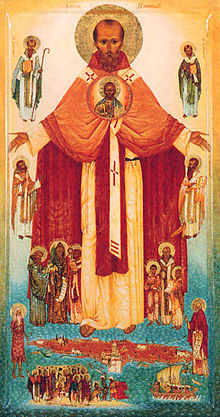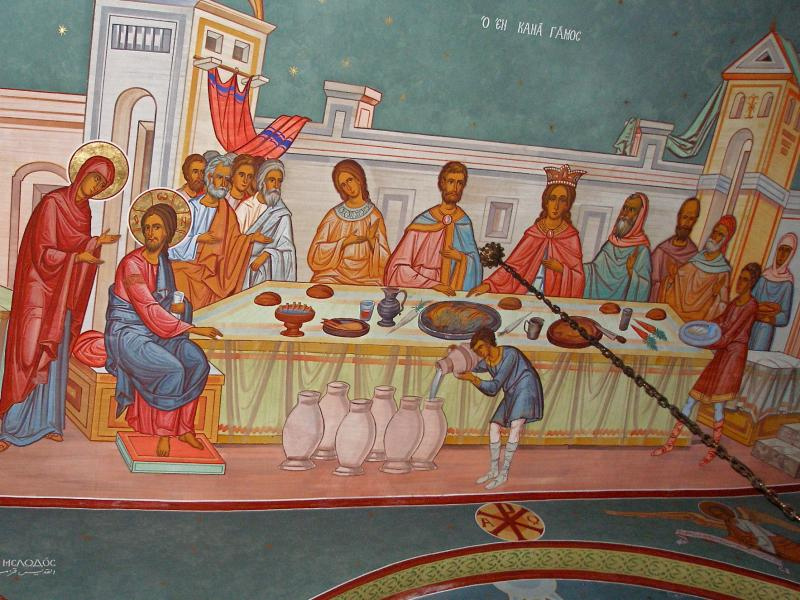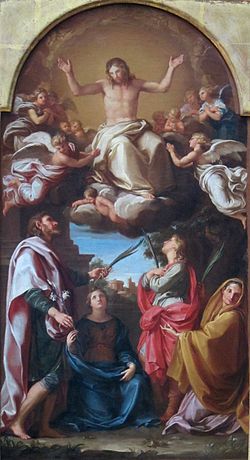So far in this series on how the calendar affects the Office I've focused on the hours and days of the week.
The next step, though, is to start looking at how the weekly cycle interacts with the other cycles of the Office.
And this requires an understanding of the level and types of 'days' and feasts.
To this end, I thought it might be helpful to progressively work through the process of building an 'Ordo' or set of instructions on how to pray the Office each day.
Constructing a personal Ordo
The first thing to do in thinking about your Ordo is, as I've suggested in the last couple of posts, to start with the 'ferial' Office each day, or the Office as it is said outside of special seasons, and on days where there are no feasts or special days that affect the Office.
The starting point for a Wednesday might look something like this:
Wednesday
In order to take account of feasts and special offices, however, you need to know that each day and feast of the year has a ranking.
The Class of a day or feast is important because where two different feasts or days clash, their respective rankings determine what texts are used.
In the 1962 calendar there are basically four levels of feasts and days:
And the default ranking of Sundays is Class II.
So we can now add those rankings to our default Ordo, as follows:
Sunday - Class II
Monday - Class IV
Tuesday - Class IV
Wednesday - Class IV
Thursday – Class IV
Friday - Class IV
Saturday - Class IV
Office of Our Lady on Saturday
On Class II Sundays, and Class IV Mondays to Fridays without feasts, the standard texts for the Office (collect at hours other than Prime and Compline aside) will be those of the day of the week.
On Class IV Saturdays, however, the default is to use the Office of Our Lady on Saturday from Matins to None (the texts for the day hours can be found in the Diurnal on pages (129) and following).
The impact of the Office of Our Lady on the Office is summarised in the table below:
Accordingly, the default set of instructions for a Saturday might look like this:
Saturday Class IV - Office of Our Lady on Saturday
Matins: Invitatory antiphon, hymn, reading(s), collect and chapter of Our Lady on Saturday; psalms and antiphons of Saturday in the psalter.
Lauds: Psalms and antiphons of Saturday, rest from the Office of Our Lady on Saturday.
Prime: Antiphon of Our Lady on Saturday, rest of Saturday in the psalter.
Terce to None: Antiphon, chapter, versicle and collect of Our Lady on Saturday, rest as for Tuesday to Saturday in the psalter.
Vespers: As for Saturday in the psalter.
Compline: As in the psalter.
Note that in older sets of rubrics (still used by some monasteries), the Office of Our Lady on Saturday started on Friday night with I Vespers.
In the next part of this series we will start looking at how the fixed day feasts of the calendar affect our Ordo.
The next step, though, is to start looking at how the weekly cycle interacts with the other cycles of the Office.
And this requires an understanding of the level and types of 'days' and feasts.
To this end, I thought it might be helpful to progressively work through the process of building an 'Ordo' or set of instructions on how to pray the Office each day.
Constructing a personal Ordo
The first thing to do in thinking about your Ordo is, as I've suggested in the last couple of posts, to start with the 'ferial' Office each day, or the Office as it is said outside of special seasons, and on days where there are no feasts or special days that affect the Office.
The starting point for a Wednesday might look something like this:
Wednesday
Matins: All as for Wednesday in the psalter
Lauds: All as for Wednesday in the psalter
Prime: All as for Wednesday in the psalter
Terce to None: All as for Tuesday to Saturday in the psalter
Vespers: All as for Wednesday in the psalter
Compline: All as in the psalter every day
Levels of days and feasts
Lauds: All as for Wednesday in the psalter
Prime: All as for Wednesday in the psalter
Terce to None: All as for Tuesday to Saturday in the psalter
Vespers: All as for Wednesday in the psalter
Compline: All as in the psalter every day
Levels of days and feasts
In order to take account of feasts and special offices, however, you need to know that each day and feast of the year has a ranking.
The Class of a day or feast is important because where two different feasts or days clash, their respective rankings determine what texts are used.
In the 1962 calendar there are basically four levels of feasts and days:
- Class I (solemnities);
- Class II;
- Class III; and
- Class IV (ordinary weekdays and memorials).
For those used to the 1970 calendar, or wanting to understand how the the 1962 calendar aligns with earlier versions, the table below provides rough equivalents.
1969 (OF/NO)
|
1962
|
Pre-1962
|
Abolished
|
Memorial
|
Simples, 1955 commemorations
|
Memorial (optional or obligatory)
|
Class III
|
Greater doubles,
Doubles, 1955 simples,
semi-doubles
|
Feasts
|
Class II
|
Doubles Class II
|
Solemnities
|
Class I
|
Doubles Class I
|
The defaults
In the 1962 calendar, the default ranking of a day of the week is Class IV.
In the 1962 calendar, the default ranking of a day of the week is Class IV.
And the default ranking of Sundays is Class II.
So we can now add those rankings to our default Ordo, as follows:
Sunday - Class II
Monday - Class IV
Tuesday - Class IV
Wednesday - Class IV
Thursday – Class IV
Friday - Class IV
Saturday - Class IV
Office of Our Lady on Saturday
On Class II Sundays, and Class IV Mondays to Fridays without feasts, the standard texts for the Office (collect at hours other than Prime and Compline aside) will be those of the day of the week.
On Class IV Saturdays, however, the default is to use the Office of Our Lady on Saturday from Matins to None (the texts for the day hours can be found in the Diurnal on pages (129) and following).
The impact of the Office of Our Lady on the Office is summarised in the table below:
Lauds (and Vespers)
|
Prime
|
Terce to None
| |
Antiphons for the psalms
|
For Saturday throughout the year
|
Of Our Lady
|
Of Our Lady
|
Psalms
|
Of Saturday
| ||
Hymn
|
Of Our Lady
|
All as for Prime throughout the year
|
Of Terce, Sext and None throughout the year
|
responsory
|
Of Our Lady
|
na
| |
chapter
|
Of Our Lady
| ||
versicle
| |||
collect
| |||
Saturday Class IV - Office of Our Lady on Saturday
Matins: Invitatory antiphon, hymn, reading(s), collect and chapter of Our Lady on Saturday; psalms and antiphons of Saturday in the psalter.
Lauds: Psalms and antiphons of Saturday, rest from the Office of Our Lady on Saturday.
Prime: Antiphon of Our Lady on Saturday, rest of Saturday in the psalter.
Terce to None: Antiphon, chapter, versicle and collect of Our Lady on Saturday, rest as for Tuesday to Saturday in the psalter.
Vespers: As for Saturday in the psalter.
Compline: As in the psalter.
Note that in older sets of rubrics (still used by some monasteries), the Office of Our Lady on Saturday started on Friday night with I Vespers.
Which feast or day has priority?




